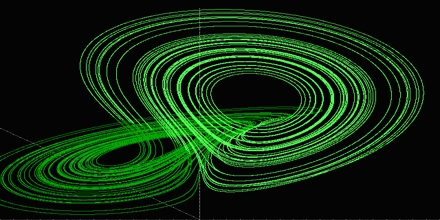Articles
Yao Jia GUO, Xin Sheng WANG, Yu Jun ZHU
In this paper, forward expansiveness and entropies of ``subsystems''$^{2)}$ of $\mathbb{Z}_+^k$-actions are investigated. Let $\alpha$ be a $\mathbb{Z}_+^k$-action on a compact metric space. For each $1\le j\le k-1$, denote $\mathbb{G}_j^+=\{V_+:=V\cap\mathbb{R}_+^k: V \text{ is a } j\text{-dimensional subspace of } \mathbb{R}^k\}$. We consider the forward expansiveness and entropies for $\alpha$ along $V_+\in \mathbb{G}_j^+$. Adapting the technique of ``coding'', which was introduced by M. Boyle and D. Lind to investigate expansive subdynamics of $\mathbb{Z}^k$-actions, to the $\mathbb{Z}_+^k$ cases, we show that the set $\mathbb{E}^+_j(\alpha)$ of forward expansive $j$-dimensional $V_+$ is open in $\mathbb{G}_j^+$. The topological entropy and measure-theoretic entropy of $j$-dimensional subsystems of $\alpha$ are both continuous in $\mathbb{E}^+_j(\alpha)$, and moreover, a variational principle relating them is obtained.
For a $1$-dimensional ray $L\in\mathbb{G}_1^+$, we relate the $1$-dimensional subsystem of $\alpha$ along $L$ to an i.i.d. random transformation. Applying the techniques of random dynamical systems we investigate the entropy theory of $1$-dimensional subsystems. In particular, we propose the notion of preimage entropy (including topological and measure-theoretical versions) via the preimage structure of $\alpha$ along $L$. We show that the preimage entropy coincides with the classical entropy along any $L\in \mathbb{E}_1^+(\alpha)$ for topological and measure-theoretical versions respectively. Meanwhile, a formula relating the measure-theoretical directional preimage entropy and the folding entropy of the generators is obtained.
